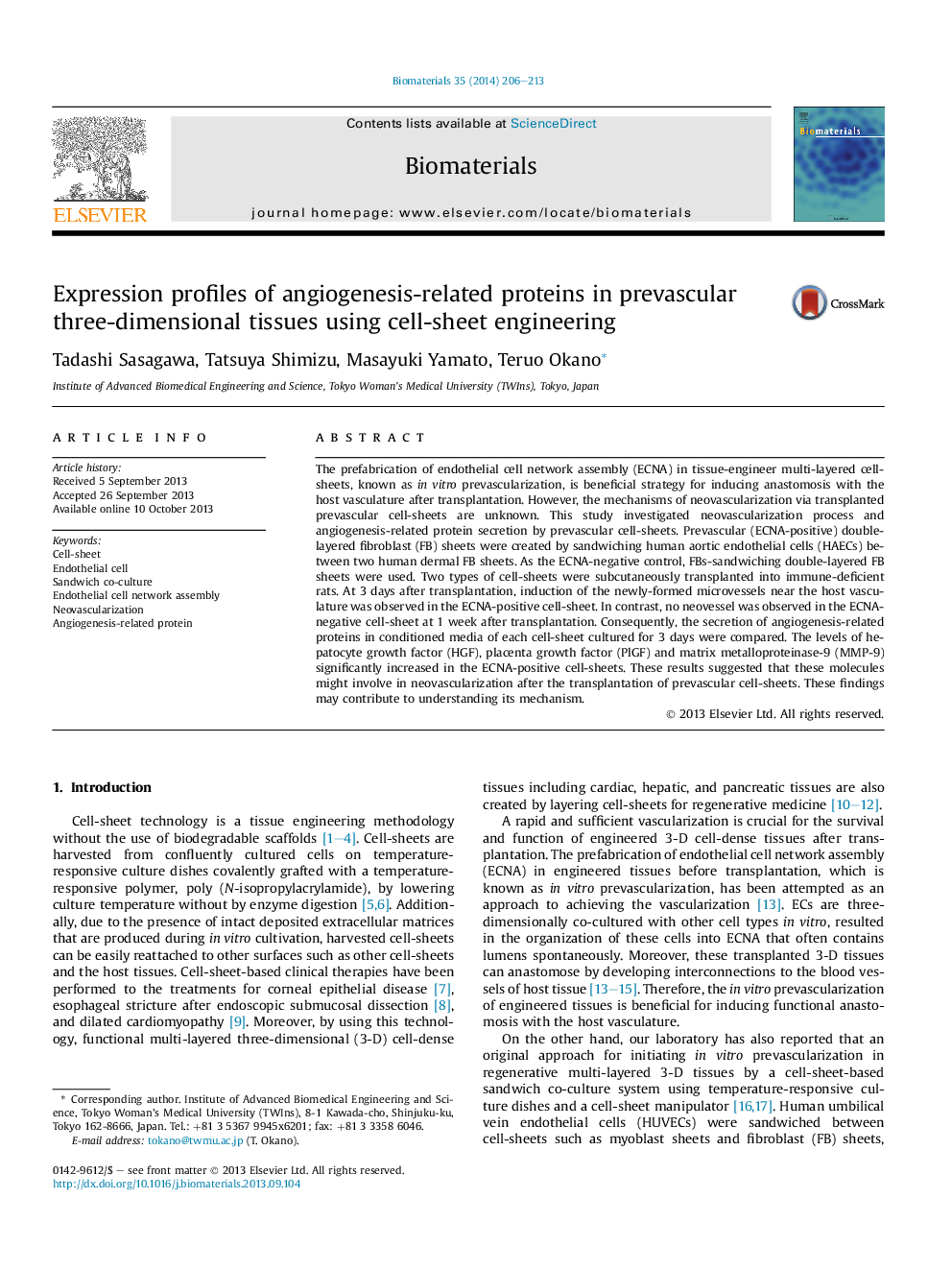| Article ID | Journal | Published Year | Pages | File Type |
|---|---|---|---|---|
| 6210 | Biomaterials | 2014 | 8 Pages |
The prefabrication of endothelial cell network assembly (ECNA) in tissue-engineer multi-layered cell-sheets, known as in vitro prevascularization, is beneficial strategy for inducing anastomosis with the host vasculature after transplantation. However, the mechanisms of neovascularization via transplanted prevascular cell-sheets are unknown. This study investigated neovascularization process and angiogenesis-related protein secretion by prevascular cell-sheets. Prevascular (ECNA-positive) double-layered fibroblast (FB) sheets were created by sandwiching human aortic endothelial cells (HAECs) between two human dermal FB sheets. As the ECNA-negative control, FBs-sandwiching double-layered FB sheets were used. Two types of cell-sheets were subcutaneously transplanted into immune-deficient rats. At 3 days after transplantation, induction of the newly-formed microvessels near the host vasculature was observed in the ECNA-positive cell-sheet. In contrast, no neovessel was observed in the ECNA-negative cell-sheet at 1 week after transplantation. Consequently, the secretion of angiogenesis-related proteins in conditioned media of each cell-sheet cultured for 3 days were compared. The levels of hepatocyte growth factor (HGF), placenta growth factor (PlGF) and matrix metalloproteinase-9 (MMP-9) significantly increased in the ECNA-positive cell-sheets. These results suggested that these molecules might involve in neovascularization after the transplantation of prevascular cell-sheets. These findings may contribute to understanding its mechanism.
